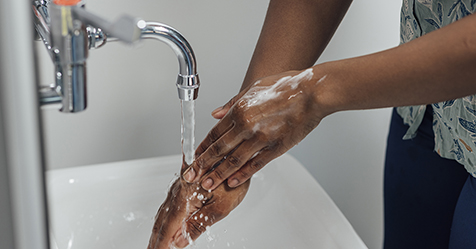From community centers with bustling gyms to expansive sports complexes with indoor tracks, maintaining a comfortable environment for patrons is crucial. This is where advanced HVAC systems come in, silently working behind the scenes to regulate temperature and air quality. Understanding the specific system in place, whether centralized or comprised of individual units, is essential for proper maintenance and efficient operation.
Beyond the standard heating and cooling components, specialized equipment might be necessary depending on the facility’s purpose. For example, indoor swimming pools require dehumidifiers to combat moisture buildup and prevent mold growth, while ice rinks rely on chillers to maintain optimal freezing temperatures. To streamline these specialized needs and ensure peak performance across the entire system, many facility managers are adopting recreation management software. This software centralizes maintenance efforts, allowing for proactive scheduling and prompt attention to potential issues. Ultimately, it enhances operational efficiency and patron comfort.
Understanding your HVAC system
Every facility has a unique HVAC system, tailored to its specific needs. Knowing the fundamentals of your system is essential for effective upkeep. Most facilities use either centralized or split systems.
- Centralized systems usually have a rooftop unit (RTU) that takes care of the complete HVAC operations—handling heating, cooling, and ventilation for the entire building.
- Split systems consist of separate units for heating and cooling purposes. An indoor unit manages air distribution, while an outdoor unit houses the compressor and condenser.
Some facilities, like pools and ice rinks, may require additional equipment such as dehumidifiers or chillers to maintain specific temperature and humidity levels. Regardless of the system type, understanding its components is the crucial first step toward proper preventive maintenance.
Benefits of preventive maintenance
In addition to understanding the basics of your recreation facility’s HVAC system and its components, it’s important to recognize the advantages of regular HVAC maintenance. Here are some of the most important ones:
- Improved air quality: Regularly changing filters and cleaning HVAC components improves the air quality in your facilities. This reduces allergens and pollutants in indoor environments where many people gather, creating a more comfortable and breathable atmosphere.
- Consistent performance: Well-maintained HVAC systems provide reliable performance, ensuring occupants have a positive experience.
- Optimized comfort: Fine-tuning temperature and humidity controls ensures all HVAC components work together to maintain a pleasant environment.
- Cost savings: Routine maintenance reduces energy consumption and prevents major repair expenses; efficient operation leads to a better return on investment over time.
- Documentation and accountability: Maintaining a detailed maintenance activity log documents the system’s health and performance. Keeping accessible records demonstrates a commitment to safety, which can be valuable for warranty claims and compliance with regulations.
- Reduced risk and repairs: Taking proactive steps to maintain your equipment helps catch small problems before they turn into big headaches. This saves you money on costly repairs and keeps your systems running smoothly without unexpected downtime.
- Prolonged equipment lifespan: By staying ahead of issues and fixing them early, you can make your HVAC equipment last longer. This means you won’t have to replace it prematurely, saving you both time and money in the long run.
- Enhanced energy efficiency: A well-maintained HVAC system works more efficiently, using less energy to keep your spaces comfortable. This efficiency translates to lower utility bills and reduced energy consumption, helping you save money while reducing your environmental footprint.
- Improved safety: Regular maintenance acts as a preventive measure against potential safety hazards, such as carbon monoxide leaks and mold growth, which are commonly associated with inadequately maintained systems.
Maintenance strategies for long-term success
Next, you can combine your knowledge of the HVAC system and its preventive maintenance benefits with the following facility maintenance strategies to maximize long-term success:
- Tracking repair time and costs: Keeping detailed records of repair activities is essential. For instance, if a high-traffic area carpet is replaced after one year, it’s wise to anticipate a similar replacement schedule annually. Documenting the timeline of wear and tear for different areas of the center, along with associated replacement costs, provides valuable insights for budget planning.
- Maintaining contractor information: Maintaining a database of contractors and service providers is beneficial in the long term. Knowing the professionals involved in the initial setup and maintenance of the recreation center facilitates future maintenance tasks. Contractors familiar with the facility’s layout and previous work history can expedite repairs and reduce overall expenses. Organizing contractor information upfront saves both time and resources down the line.
- Budget for maintenance: It’s crucial to anticipate wear and tear, especially in a facility where individuals engage in vigorous activities throughout the day. Whether it’s weightlifting, running, or other energetic pursuits, setting aside a maintenance budget is essential for the smooth operation of your recreation center. Maintenance is an ongoing expense, and it should be treated as such, with a dedicated budget allocated annually.
- Preparing for emergencies: Working in the world of recreation often means facing the boundless energy of athletes. A smart recreation facilities management team anticipates this by investing in top-notch, durable equipment built to withstand rigorous use. Clever design choices, like high-mounted light fixtures and a raised carpet base, further protect the facility. Even seemingly minor details, like selecting scuff-resistant paint, contribute to the longevity and overall appeal of your recreation center.
By implementing these essential preventive HVAC maintenance management tips and recreation facility management strategies, you can ensure peak performance, extend equipment lifespan, and create a comfortable and safe environment for all your patrons. These actions will contribute to the long-term success of your recreation facility.



